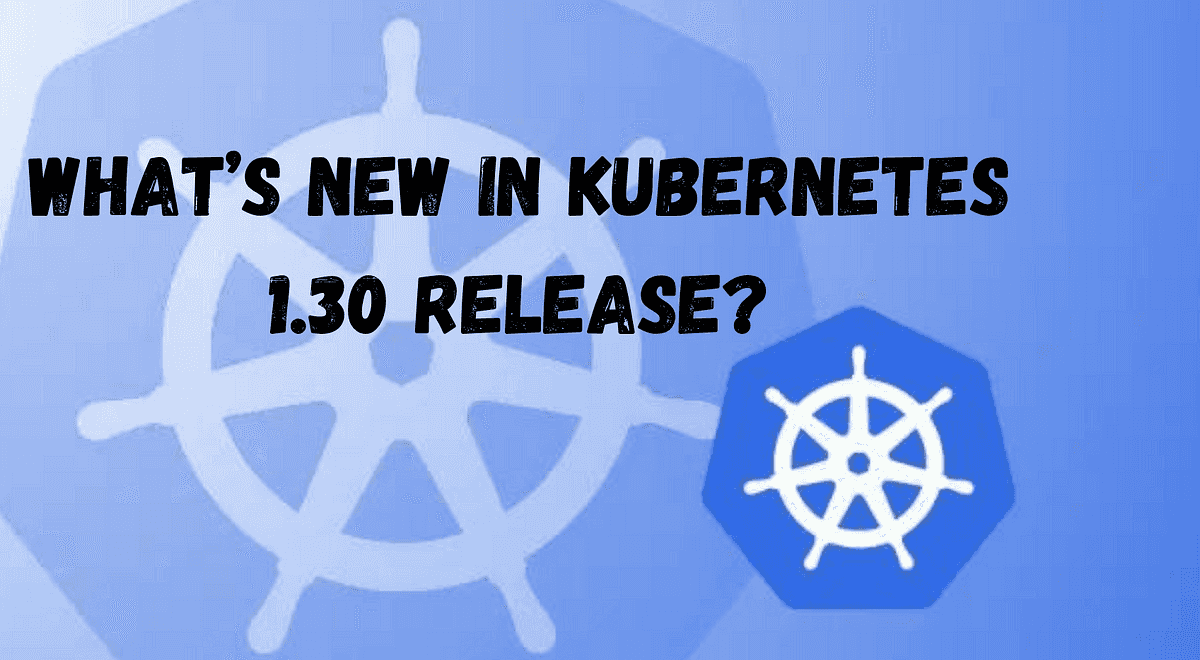
Kubernetes 1.30: Key Improvements You Need to Know
Content
v1.30 brings significant security enhancements and improved resource management
☸️ Introduction
Kubernetes 1.30, set to be released on April 17th, 2024, introduces a host of new features and improvements that focus on enhancing the security, resource management, and overall cluster management capabilities of the popular container orchestration platform.
🛠️ Apps in Kubernetes 1.30
Kubernetes 1.30 introduces more granular failure reasons for Job PodFailurePolicy, a PodHealthyPolicy for PodDisruptionBudget, and a Job Success/Completion Policy. These features provide greater flexibility and control for managing and monitoring application workloads.
🖥️ CLI in Kubernetes 1.30
The CLI in Kubernetes 1.30 also sees several enhancements, such as the ability to customize debug resources using the --custom flag in kubectl debug, the addition of subresource support to kubectl, and the introduction of an --interactive flag for the kubectl delete command to prevent accidental deletions.
📈 Instrumentation
Instrumentation has also been a focus in this release, with improvements to API Server tracing, metric cardinality enforcement, and the introduction of contextual logging. These features aim to enhance debugging, monitoring, and overall observability within Kubernetes environments.
🌐 Networking
On the networking front, Kubernetes 1.30 introduces changes to the Kubernetes cloud controller manager's service controller, including the removal of transient node predicates and improvements to Ingress connectivity reliability. Additionally, the release makes Kubernetes more aware of LoadBalancer behavior, allowing cloud providers to better integrate their infrastructure with Kubernetes.
🖥️ Nodes
Enhancements to node management include the introduction of a 'sleep' action for the PreStop lifecycle hook, node memory swap support, and the integration of AppArmor for defining and enforcing security policies at the container level.
📅 Scheduling
Scheduling improvements in Kubernetes 1.30 include the introduction of MatchLabelKeys for PodAffinity and PodAntiAffinity, the decoupling of TaintManager from the NodeLifecycleController, and the ability to make pod scheduling directives mutable when gated.
💾 Storage
Finally, in the storage domain, Kubernetes 1.30 introduces a feature to prevent unauthorized volume mode conversion during volume restore, addressing a potential security gap in the VolumeSnapshot functionality.
🔒 Support for User Namespaces in Pods
User namespaces is a Linux-only feature that better isolates pods to prevent or mitigate several CVEs rated high/critical, including CVE-2024-21626, published in January 2024. In Kubernetes 1.30, support for user namespaces is migrating to beta and now supports pods with and without volumes, custom UID/GID ranges, and more!
📝 CEL for Admission Control
Integrating Common Expression Language (CEL) for admission control in Kubernetes introduces a more dynamic and expressive way of evaluating admission requests. This feature allows complex, fine-grained policies to be defined and enforced directly through the Kubernetes API, enhancing security and governance capabilities without compromising performance or flexibility.
CEL's addition to Kubernetes admission control empowers cluster administrators to craft intricate rules that can evaluate the content of API requests against the desired state and policies of the cluster without resorting to Webhook-based access controllers. For more information on using CEL for admission control, see the API documentation.
🏁 Conclusion
Overall, Kubernetes 1.30 represents a significant step forward in enhancing the security, flexibility, and manageability of the platform, providing users with a more robust and reliable Kubernetes environment.
References:
- https://github.com/orgs/kubernetes/projects/175/views/1
- https://kubernetes.io/blog/2024/03/12/kubernetes-1-30-upcoming-changes/
- https://collabnix.com/whats-new-in-kubernetes-1-30-release/
- https://www.reddit.com/r/kubernetes/comments/1c57j8z/whats_new_in_kubernetes_130/
- https://sysdig.com/blog/whats-new-in-kubernetes-1-30/
Until next time, つづく 🎉
💡 Thank you for Reading !! 🙌🏻😁📃, see you in the next blog.🤘 Until next time 🎉
🚀 Thank you for sticking up till the end. If you have any questions/feedback regarding this blog feel free to connect with me:
♻️ LinkedIn: https://www.linkedin.com/in/rajhi-saif/
♻️ X/Twitter: https://x.com/rajhisaifeddine
The end ✌🏻
🔰 Keep Learning !! Keep Sharing !! 🔰
📅 Stay updated
Subscribe to our newsletter for more insights on AWS cloud computing and containers.
